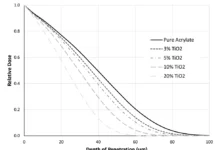A.The adoption of low-energy electron beam (EB) technology can be a significant step forward for any company regarding manufacturing capabilities, the lowering of overall energy costs and the promotion of environmental sustainability.
Two electron beam system installation aspects that should be addressed and planned for early in the acquisition process relate to registration with local government authorities and the establishment of an EB safety program.
In Jurisdiction EB Equipment Registration: US and Canada
In the US and Canada, equipment suppliers and end-user locations are required to file with the appropriate state or provincial authorities. The filing is usually submitted to a local Department of Health and Environment. The cost is typically less than $250. Depending on the local authority and the owner’s past experience with low-energy, self-shielded EB system adoption, the filing and overall approval process can take from a few weeks to months. The paperwork required typically consists of current facility drawings along with performance and installation location details regarding the system to be installed. Similar notifications are required if an electron beam system is moved to a new operating location or permanently decommissioned.
Local radiation control authorities will assist with the procedures to allow the installation and operation to take place with legal compliance. If authorities are included early enough in the integration process, delays can be minimized. Local radiation control authorities can either stop or delay an installation if ownership notification is not given with sufficient advance notice. Nuclear regulatory authorities have no jurisdiction over the installation of low-energy electron beams.
Most radiation control authorities require the vendor to be registered in the jurisdiction to either sell or service ionizing radiation equipment. Make sure your EB equipment vendor is properly registered before equipment deliveries. Many authorities require the facility where the equipment is to be domiciled to be registered in the jurisdiction prior to equipment receipt. Some US jurisdictions will allow the equipment to be received and installed before the facility is registered.
Once the equipment has been installed and before it is put into operation, it must be checked for radiation and interlock safety levels. The safety check should be performed by an expert registered to perform such checks (i.e. a system supplier). After the initial survey and equipment start-up, many authorities will permit an on-site radiation safety officer (RSO) to take over responsibility of performing or supervising quarterly surveys. In return, the assigned RSO must submit to local authorities the operation procedures, survey and interlock procedures, training program and emergency procedures on a regular schedule.
European Union (EU)
In the EU, a license is needed to import, install and operate a self-shielded electron beam system. The system must meet legal radiation protection and safety rules. It must have a European Conformity (CE) certificate, which includes a risk analysis. All components used in the EB system, and the system as a whole, must meet CE requirements. Although the EU provides general overall guidance on the registration and safety of shielded EB systems, each EU member state is free to apply stricter rules via its own set of safety bodies and authorities.
In France, for example, Autorité de Sureté Nucléaire (ASN) will typically request first-time owners to either seek “authorization of ownership” or, in the event that the EB system is already known by authorities, make a “declaration of ownership.” It is highly recommended to request that the system manufacturer provide experienced guidance prior to filing ASN documents.
In Belgium, the Agence Fédérale de Contrôle Nucléaire (AFCN /FCNA) requires equipment owners to complete a Class III authorization form and have an annual radioprotection audit completed by a certified expert. In Italy, the process goes through a radiation protection qualified expert who must submit a technical report on the equipment to the Italian Energy and Sustainable Economic Development Agency (ENEA) to receive a Type B authorization for use of the EB unit.
Published by RadTech Europe, the “Joint-Protocol on Improving Conditions of Use of EB Technology in the Printing and Coating Industry in Europe”1 covers the use of electron beam systems by the printing and coating industry. It contains useful information, such as the names and addresses of various national European bodies and organizations dealing with licenses, regulations, etc.
Knowledgeable companies specializing in radiation safety in North America, such as Fowler Associates and RSO Services, can provide similar guidance, along with RSO training for EB technology adoptees.
Radiation Safety Office (RSO)
In addition to regulatory agency registration by the facility where the system is installed, the facility must also nominate a radiation safety officer (RSO). In both the US and the EU, regulatory agencies look at education and experience in the approval process of RSO candidates. The RSO should receive training from a company registered for providing such training. In Germany, candidates are selected and training is required if SF6 is used as an insulating medium in system high-voltage power supplies.
The responsibilities of an RSO will vary enormously from very slight, as in the case of a business with one or two sealed electron beam sources, to a full-time position, as in a case of a hospital that uses x-rays and nuclear medicine for the treatment. The best source of information about training requirements for a particular case is the regulatory agency that oversees your organization and the location where the system is installed.
Organizational responsibilities of the RSO focus on equipment safety and regulatory compliance, along with training and awareness. The length of RSO training can vary from eight to 40 hours, depending on the type and complexity of equipment being installed. If the equipment configuration is potentially hazardous – such as equipment configured with a personnel entry vault – the RSO should have at least 40 hours of radiation safety training.
Duties of the RSO include an annual review of the radiation safety program for adherence with mandated standards. A quarterly review of occupational exposure is required for authorized users and workers, to determine if there are any exposures of concern. A quarterly review of records of radiation levels in unrestricted and restricted areas also should take place to determine if EB systems are being operated safely. In addition, the RSO should conduct in-house training and is required to schedule briefings and sessions to educate employees regarding equipment safety.
The RSO will ensure that authorized users, workers and ancillary personnel who may be exposed to radiation will be instructed in ALARA – “As Low as Reasonably Achievable” – safety principals specifically designed to reduce radiation doses and releases of radioactive materials.
The author would like to acknowledge writing and article content assistance from the following contributors:
Marc Minon – ebeam Technologies; Francis Martin – Radsys France; Urs V. Läuppi – ebeam Technologies; Steve Fowler – Fowler Associates, Inc.; Liz Solz – Newcoinc.







